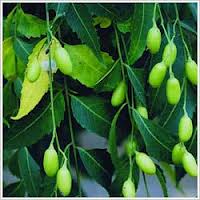 Comes February, I will be back in Kerala, India, for 21
days of pancha karma treatment and to learn more about ayurvedic use of
medicinal herbs for health and beauty. Already familiar with turmeric, neem and
henna, I discovered the wonders of hibiscus for amazing hair during my last trip.
Comes February, I will be back in Kerala, India, for 21
days of pancha karma treatment and to learn more about ayurvedic use of
medicinal herbs for health and beauty. Already familiar with turmeric, neem and
henna, I discovered the wonders of hibiscus for amazing hair during my last trip.Turmeric
North Americans are familiar with turmeric as
one of the main ingredients in curry. Fewer know that it is great to enhance the complexion and avoid facial hair,
detoxify the liver, balance cholesterol levels, fight allergies, stimulate digestion, maintain gum and dental health, and boost the immune and the cardiovascular system.
Turmeric facial paste is used by many Kerala girls and women for a glowing face skin and to avoid facial hair. I was curious to try it but wondered about the impact of the colour on my Caucasian Pitta skin. Although I have not tested it on an ongoing basis, I find that an application leaves the skin soft, supple and looking slightly tanned. However, a dry eczema spot looks a bit more yellow. I trust that the paste will heal that patch quickly. The yellow colouring is too light to show in people with black, copper and red skin. And I suspect that women of Oriental background will simply get a greater glow out of it. The following recipe is extra simple and I encourage you to try it. Doubtful? Try on your hands to first!
Turmeric facial paste recipe
- 1 dab of ghee or coconut oil
- 1 light sprinkle of turmericApply and help the paste to penetrate well everywhere.
- Rinse off with warm water (no soap) and splash cool water to close off the pores.
- Apply your usual Vata, Pitta, Kapha or other Face to Grace moisturizer to help the remaining turmeric seep into your skin.
- The ghee will bring down the turmeric deep into the layers of the epiderm and derm where the spice will work its magic.
I have already talked about neem in previous articles as a blood purifier. I recommend neem oil strongly on the skin for eczema, as a herb in cooking, or in ghee as medicine. Other important benefits include to relieve tiredness, cough, fever, loss of appetite, and parasites. It heals wounds, excessive thirst, and diabetes. Neem leaves are reported to be beneficial for eye disorders and even for leprosy.
Henna
Natural henna paste is famous to colour hair, promote hair growth and create lovely hand designs. For your skin, it prevents pimples, itch and blisters, and heals burns. For your nails, henna prevents cracking and keeps them healthy and shiny. For this, do not use the new quick-dry henna pastes on the market as they contain chemical agents that speed up the dying process but dry the skin.
Hibiscus
Hibiscus petals and leaves are used in Ayurvedic medicine to stimulate thicker hair growth and to prevent premature graying, hair loss and scalp disorders. Hibiscus petal powder acts as a natural, emollient hair conditioner. It can be used in hair washes, oil infusion treatments and vinegar rinses for the hair. Staff where I had pancha karma last year, provided a commercial ayurvedic hibiscus shampoo after every shirodara, a head massage with a stream of warm oil. I couldn’d believe how efficient it was to cut through the oil on my hair yet without drying it. I was so impressed that I bought a couple of bottles to bring home. It did wonders for my graying hair too and I plan to purchase both the powder and more shampoo when I get there.
Crushed hibiscus flower and leaves mixed with water make a great natural shampoo that thoroughly yet gently clean the hair and scalp and prevent dandruff. If you have a hibiscus plant, use the plant fresh. Otherwise get the powder.
Hibiscus shampoo recipe
- 8 to 10 hibiscus leaves
- 1 or 2 hibiscus flowers (heard that red ones are best)
- water
- 1 tsp flour
- essential oil of rosemary (optional)
- Put the leaves, flowers and 1 cup of water in a bowl. Double if you have long hair.
- Mash the leaves and flowers.
- Add about a teaspoon of flour and continue to mix. If the consistency is fairly thick, add a little more water. It should be fairly runny and sticky.
- Put the mixture through the strainer.
- Add a drop or two of rosemary essential oil.
- Shampoo with the mixture and rinse thoroughly.
- Should you have Vata (dry) hair, let it dry as much as possible as hair-blowing compounds the problem.
If you
like this article, please share it in Facebook, Pin it and other social media.




Your blog provided us with valuable information to work with. Each & every tips of your post are awesome. Thanks a lot for sharing. Keep blogging,
ReplyDeleteVkool